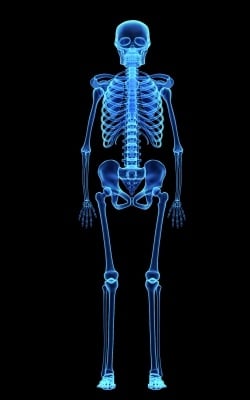Finally, some good press! Bisphosphonates & Death


It’s easy to put something down, easy to criticise and find flaws. The last few years have been a little rough for osteoporosis treatment with the media magnifying rare side effects.
While its definitely important to know about possible adverse effects from a treatment, this should always be balanced with an understanding of the benefits of the treatment.
Bisphosphonates are a class of medications used to treat osteoporosis. Common brands include Fosamax, Actonel and Aclasta. These medications are on the whole easy to use and effective in reducing worsening osteoporosis and the risk of recurrent fractures, with all the negative outcomes fractures bring (see previous post).
Bisphosphonates were linked to a painful, but rare condition called osteonecrosis of the jaw. The media circus around this led to a marked drop in the use of these drugs. The public were shown the very worst examples on TV. Dentists started to refuse to treat patients as this condition typically occurs after invasive dentistry (for eg, tooth extraction rather than a clean & scale). Patients would come in terribly afraid of this complication to the point it was not possible to reason with them. A balanced view of risk and benefit is needed, and I invite you to read the position statement from the Australian & New Zealand Bone Mineral Society.
More recently, there are reports that a very small percentage of patients on long-term therapy (more than 5 years) develop atypical fractures of the femur, the long bone in the thigh; and with the oral bisphosphonates, there may also be a small increase in the risk of oesophageal cancer.
I must stress that the risks are very low. Osteoporosis experts all agree that the benefits of bisphosphonate therapy still outweigh the risks, because these medications are clearly associated with a reduced risk for osteoporotic fractures.
It’s time for some good press.
There is accumulating evidence that osteoporosis treatment reduces the risk of death. Aclasta, a potent intravenous bisphosphonate, was associated with a 28% reduction in death after hip fractures. That’s a worthwhile positive benefit.
Most recently, analysis by the team from the Garvan Institute, using data from the Dubbo Osteoporosis Epidemiology Study (reference) demonstrated a significant and larger reduction in death in older women with or without fractures who were on these medications. This reduction in death is only partially explained by a reduction in the number of fractures, and may be due to beneficial effects of the drug on the immune system.
These findings are extremely important. The study authors wrote in their conclusion: “The apathy that currently surrounds osteoporosis treatment, whereby even in those with fractures, less than 20% of women and less than 10% of men are treated, should no longer be tolerated.”
It’s routine to be warned about possible and rare side effects, and understandable to be wary. Do you however balance this by considering the potential benefits of a medication equally carefully?
Dr Irwin Lim is a rheumatologist and a director of BJC Health. You should follow him on twitter here.Arthritis requires an integrated approach. We call this, Connected Care. Contact us.